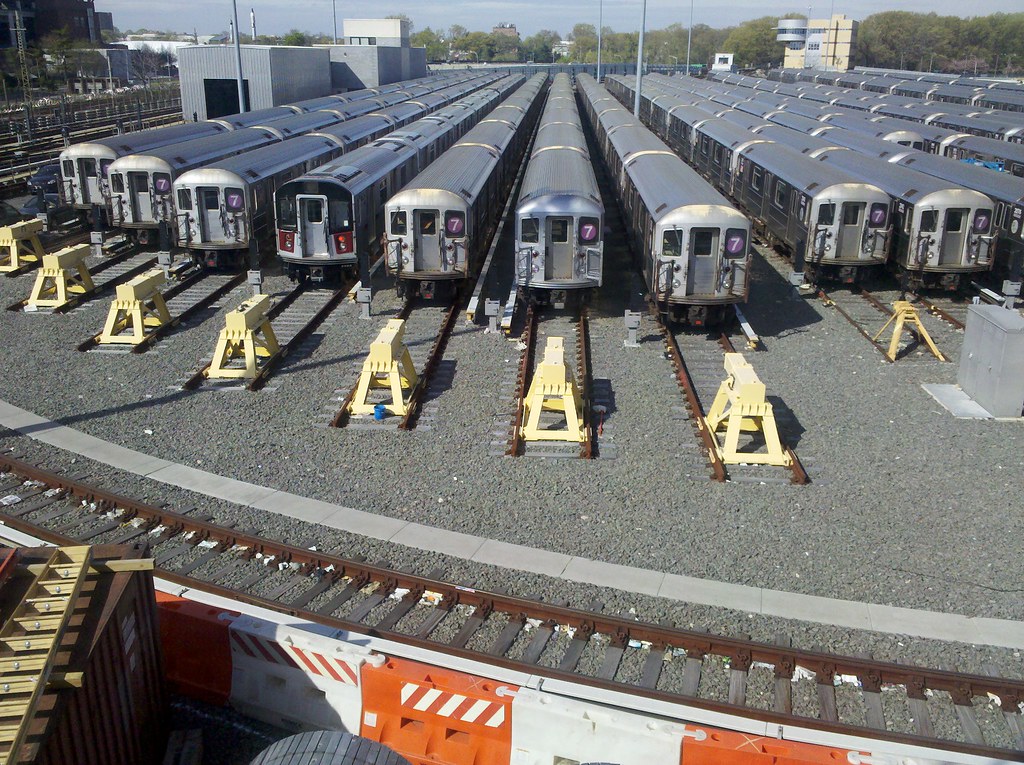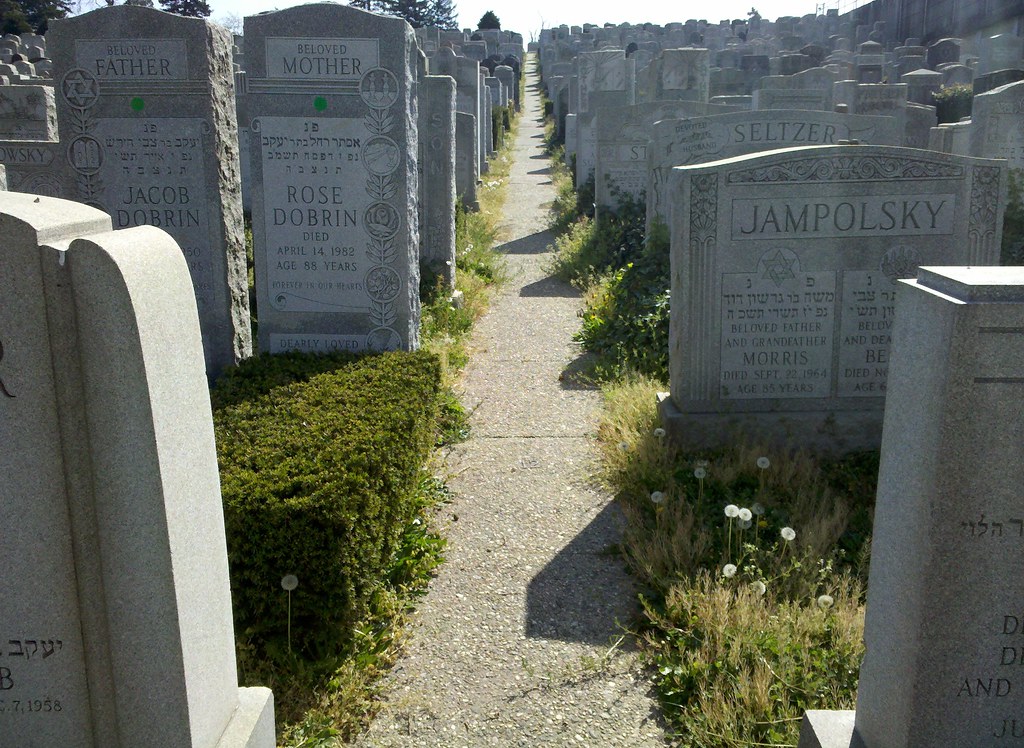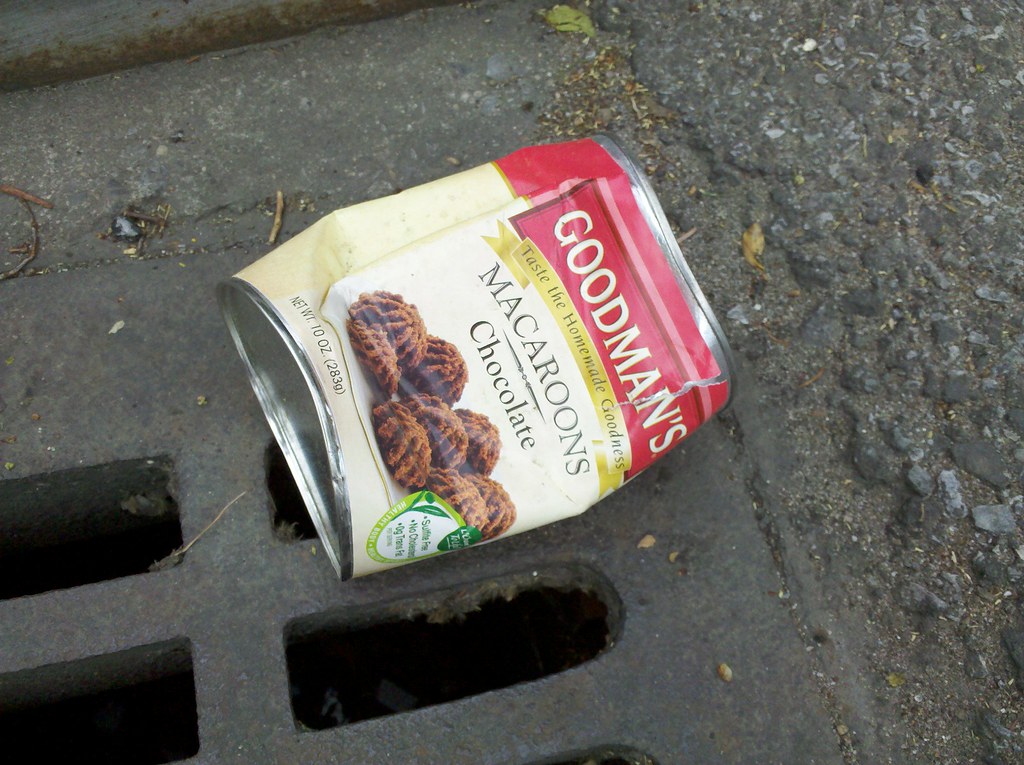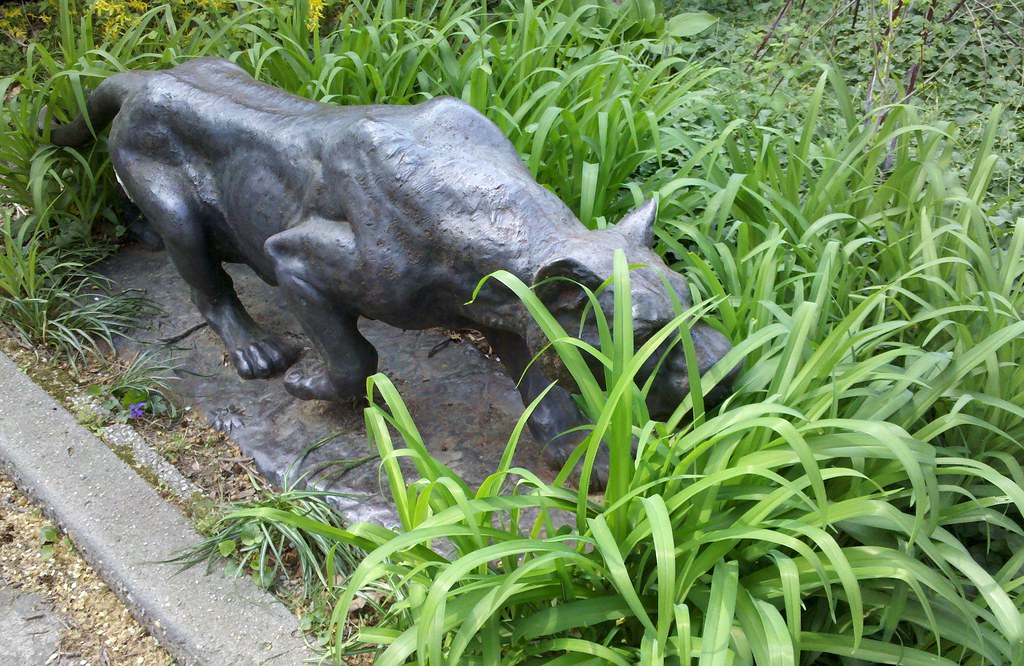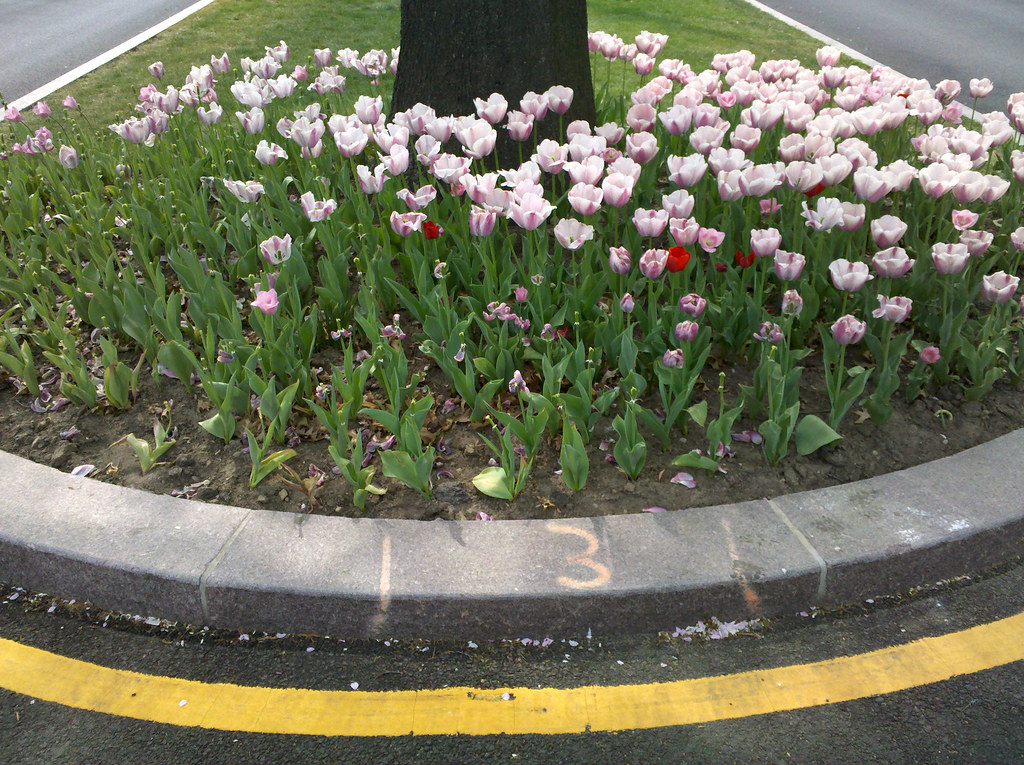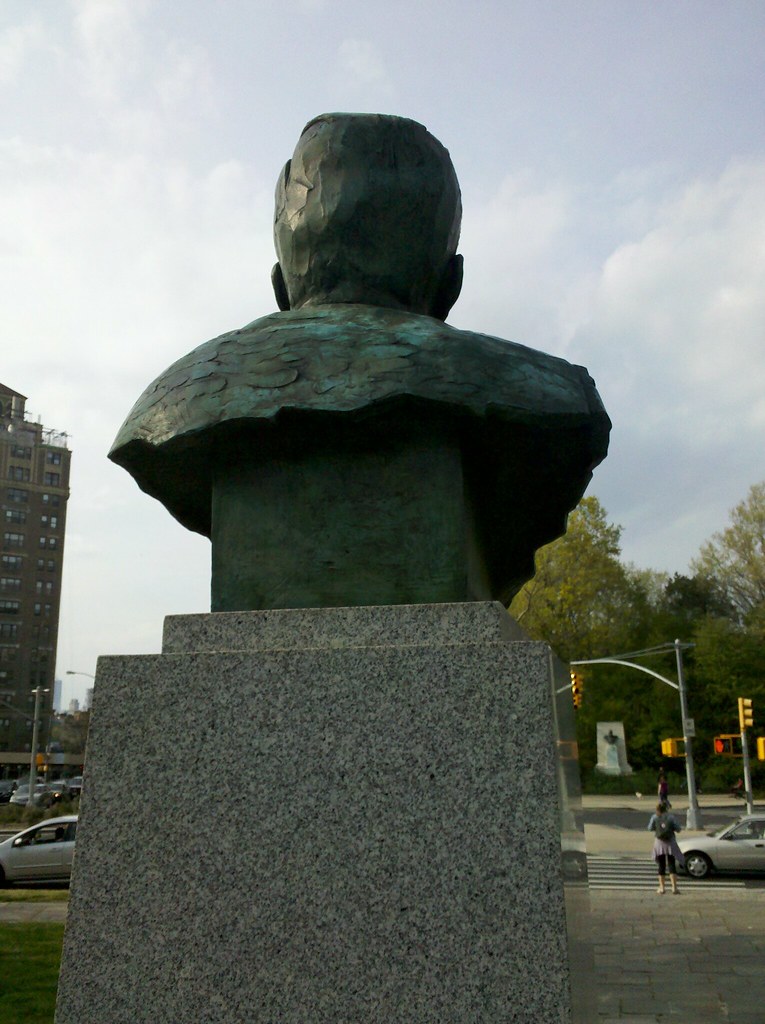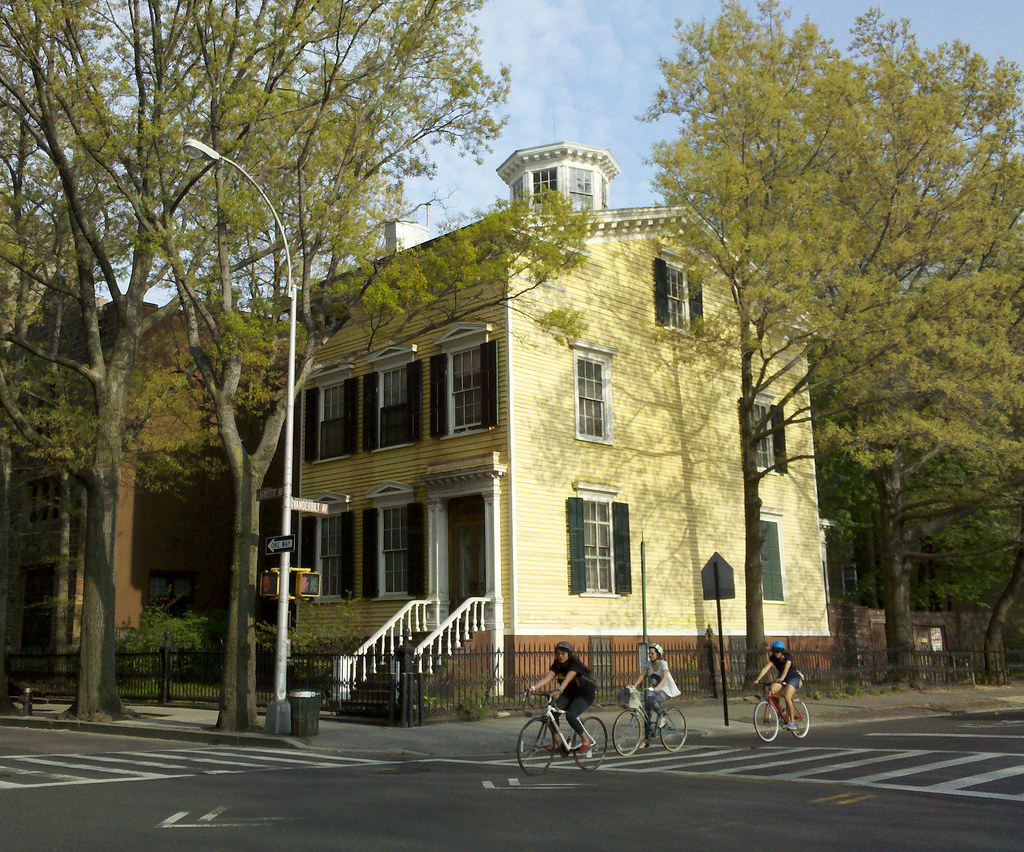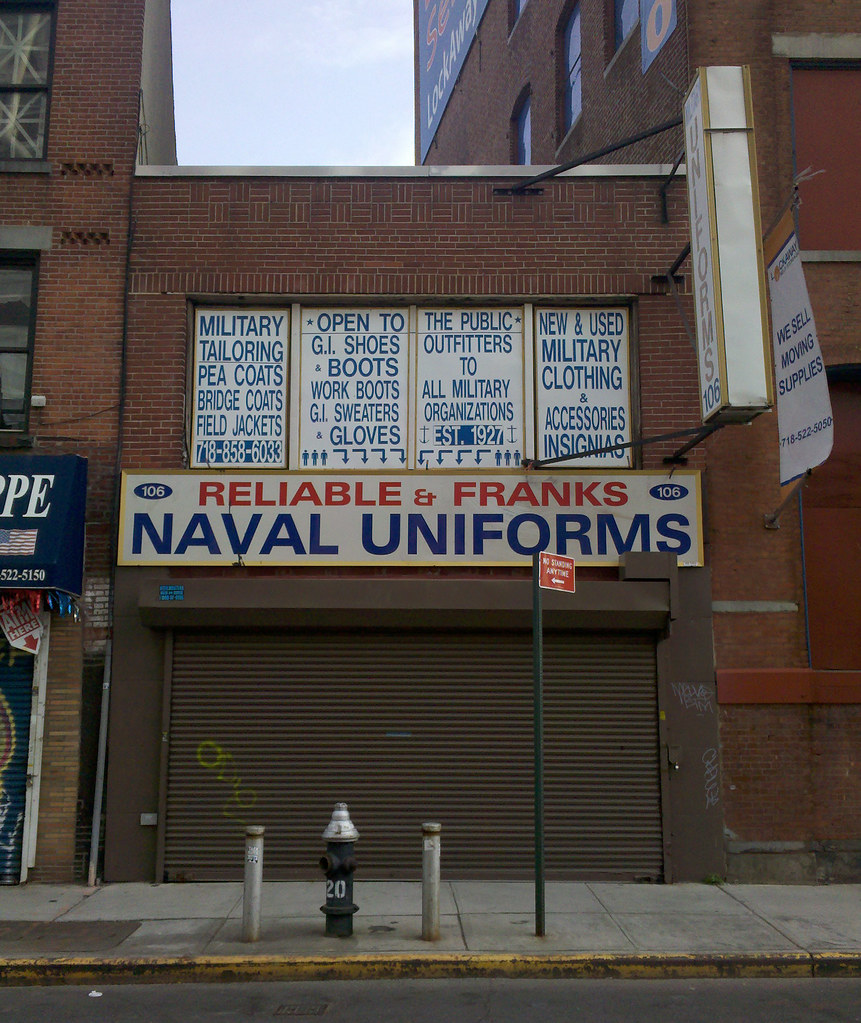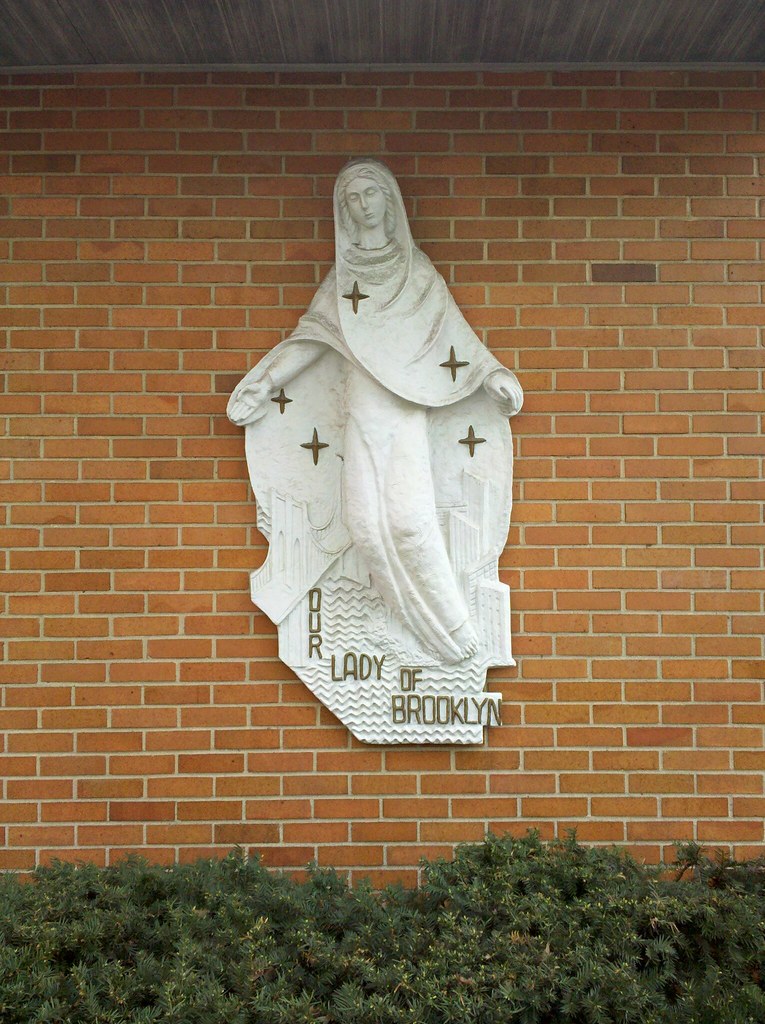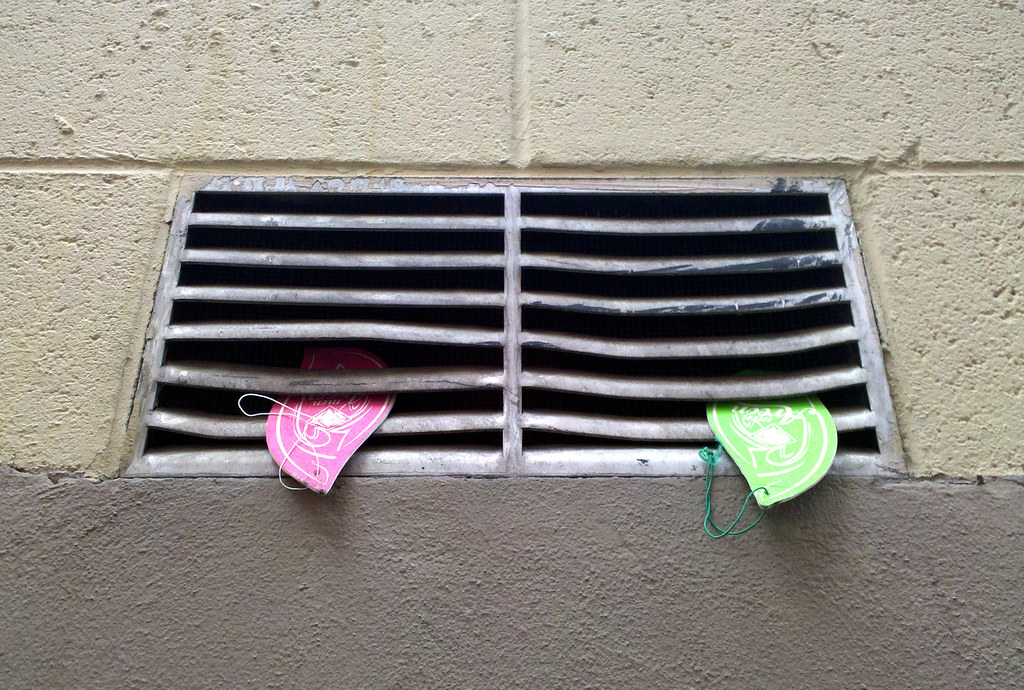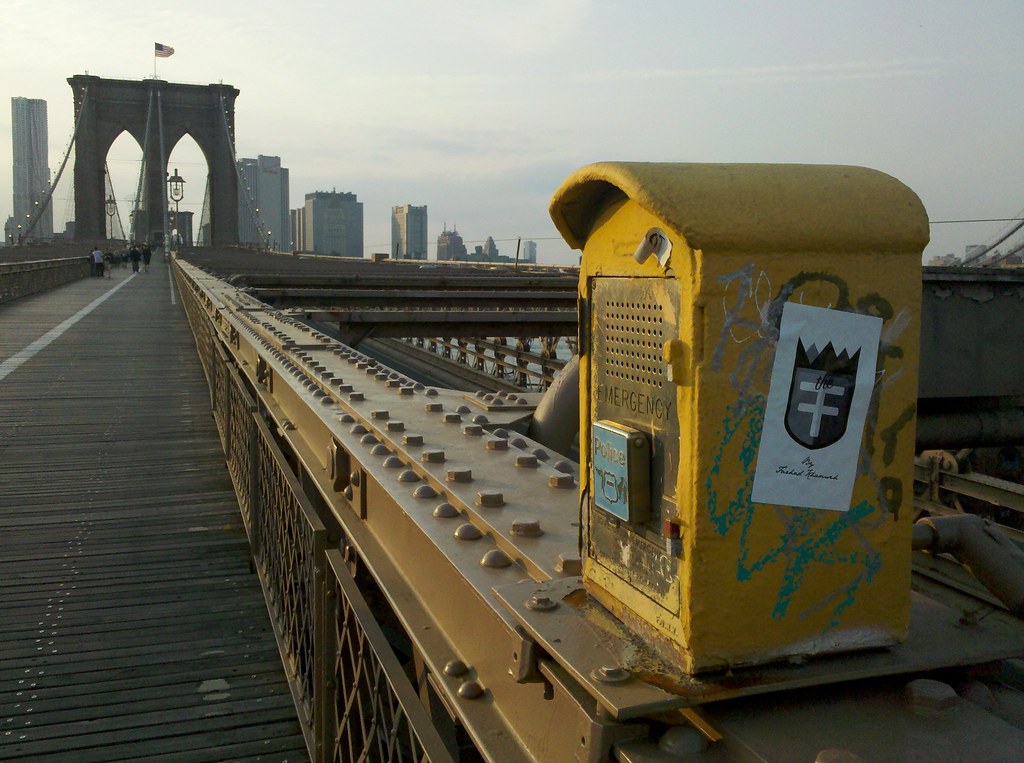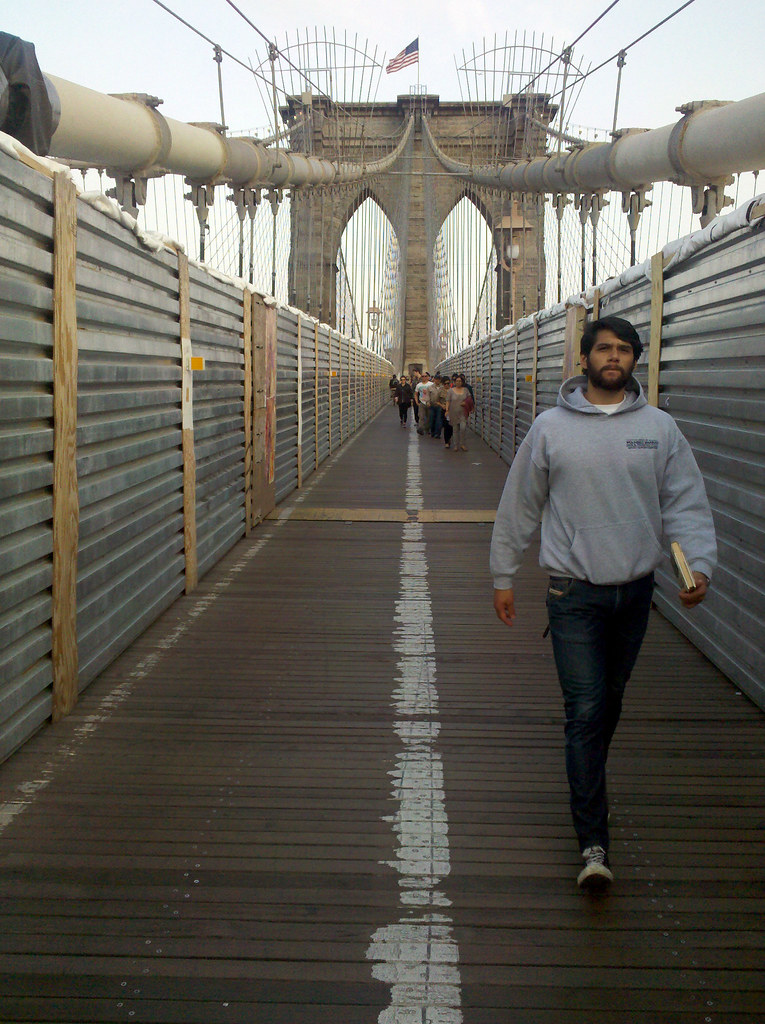
This subway yard in Flushing Meadows-Corona Park is the home of the 7 train. Along with the modern passenger cars and assorted work cars, you can always find some old Redbirds parked here. There aren't many of them left, however: the defunct Redbirds have become a hot commodity in their obsolescence, hungrily snatched up by various Atlantic states to be sunk in the ocean and used as artificial reefs. (Other, newer types of subway cars have not fared so well in this role.)
Visible in the background of this shot is the USTA National Tennis Center, where the US Open has been played every year since 1978. Arthur Ashe Stadium, in the center of the image, is the largest tennis stadium in the world.

There is a set of circular mosaics installed in Flushing Meadows celebrating the two World's Fairs that the park hosted. This piece caught my eye — did Andy Warhol really create a tribute to Robert Moses, the despotic chief bureaucrat? The answer to this question, and the fascinating story behind it, can be found here.
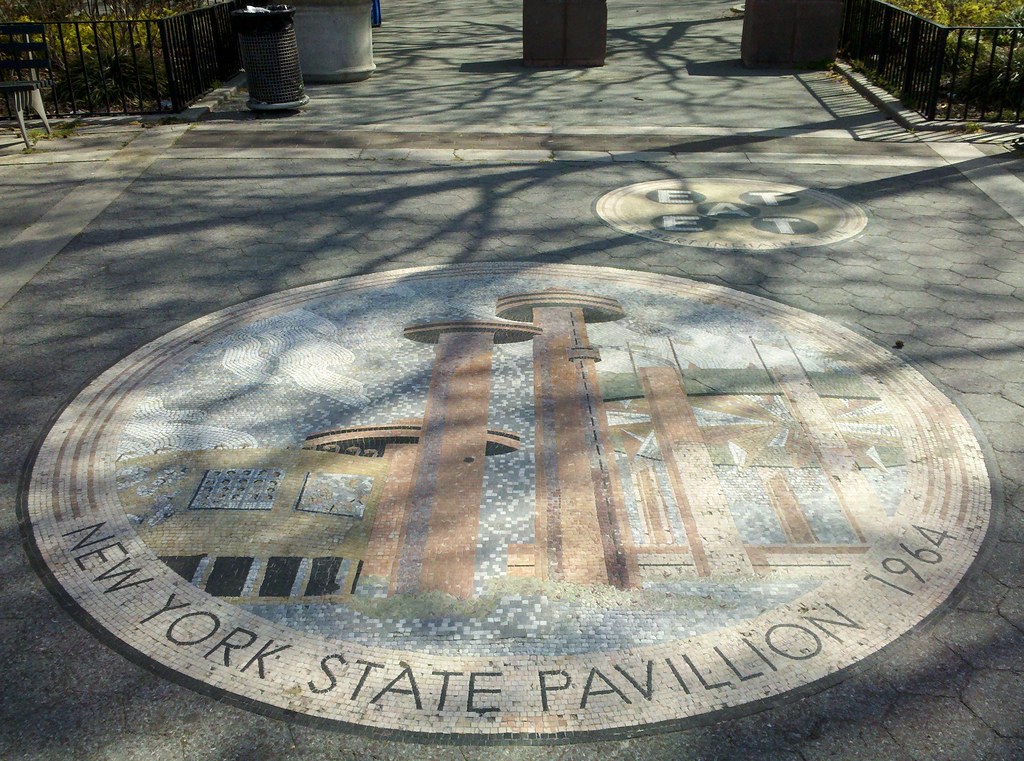
You can see Warhol's Thirteen Most Wanted Men displayed on the wall of the Theaterama! (If you have no idea what I'm talking about, see the previous post.)
The smaller mosaic in the upper right recalls another artwork exhibited at the NYS Pavilion: Robert Indiana's EAT sculpture, which accidentally attracted throngs of hungry fairgoers who mistakenly assumed it was a sign for a restaurant.
Tying this all together, Andy Warhol once shot a film entitled Eat, which features Robert Indiana eating a mushroom for 45 minutes.
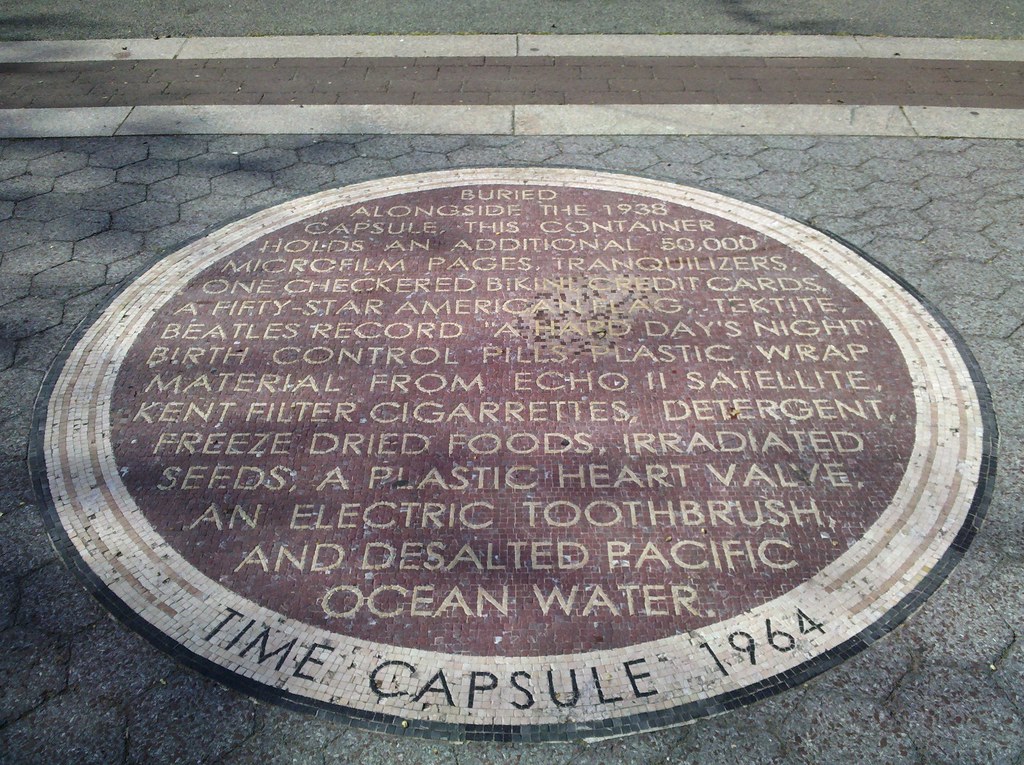
There are two time capsules buried in Flushing Meadows Park, one from each World's Fair. They're intended to stay unopened for 5,000 years! If you're interested in what was included in the capsules, you can find full lists of the contents here (1939-40 fair) and here (1964-65 fair); the mosaic list above is not complete.

Today was my grandma's unveiling, so I headed out to Mount Hebron and met my family for the ceremony. As you may be able to deduce from the headstone, Shirley's main joy in life was feeding people. She spent most of her time either cooking or thinking about what to cook next. I probably owe at least an inch of my waistline to her famous ten-course mid-morning "lunches". On an earlier visit to her gravesite in the fall, I noticed some purslane growing from the dirt above her body, so I picked it and ate it. Even in death...

Built in 1869, this building sits beside a well that once pumped about 750,000 gallons of water per day into a nearby reservoir, which in turn fed the park's artificial watercourse (all the bodies of water in Prospect Park are man-made). When Brooklyn became part of New York City in 1898, it gained access to the city's water supply system, and the well and reservoir were no longer needed.

This column memorializes the Maryland 400, whose gallant efforts and sacrifice during the Battle of Long Island (the first major battle of the Revolutionary War) "saved the American army", according to a plaque on the monument, allowing the Americans, severely outnumbered and outgunned by the British, to successfully retreat to Manhattan. Have you ever looked at a Maryland quarter and wondered how the state got its nickname? Well, now you know!

This memorial, dedicated to the Union forces of the Civil War, is one of three triumphal arches in NYC — and we've already seen the other two. It was also partially filled with puppets until a couple of years ago, when a leaking roof forced them to find new quarters.

There was once a lot of candy-making going on in Brooklyn.

This mural is a map of the neighborhood. The small black dots were added by members of the community to show where they live.
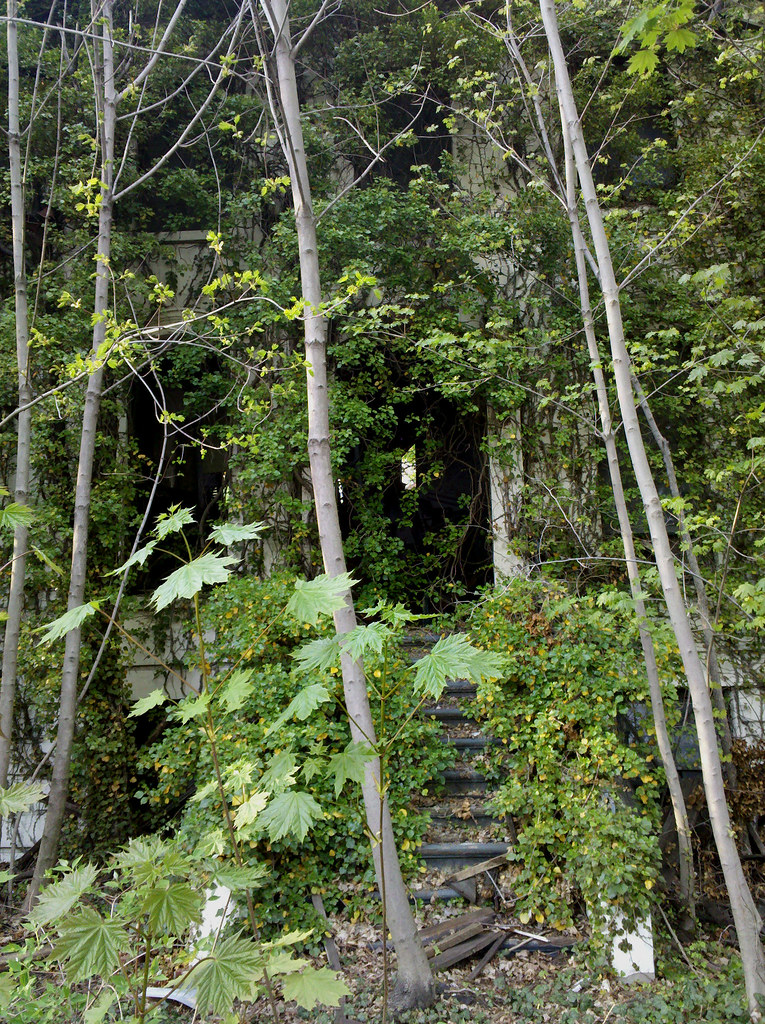
This building, hidden behind the overgrowth, is one of several deteriorating 19th-century residences lining the north side of Flushing Avenue. Known as Admiral's Row, these structures once housed naval officers at the Brooklyn Navy Yard. They've been abandoned since the 1970s, falling further and further into disrepair, to the dismay of preservationists. The city recently acquired ownership of the property from the National Guard, and plans to demolish all but two of the buildings, making way for a new supermarket and some other commercial and industrial spaces.

One of many dual-language schools in the city, Khalil Gibran's focus on Arabic language and culture made it a lightning rod for criticism by legions of paranoid Islamophobes, who feared it had a secret, insidious Islamist agenda, when it opened in 2007. (Khalil Gibran, for whom the academy is named, was a Lebanese-American Christian.) The school has been plagued with many problems in the intervening years, and it's currently being transitioned from a middle school to a high school.

